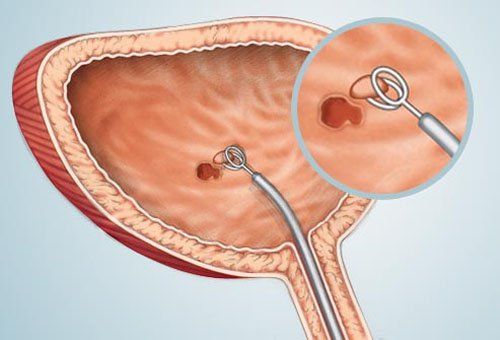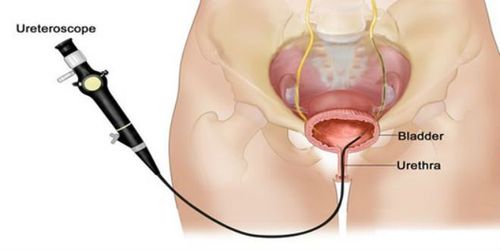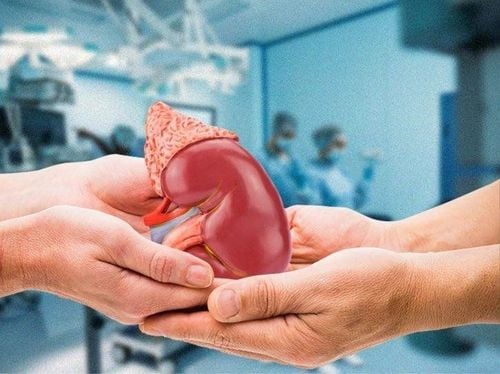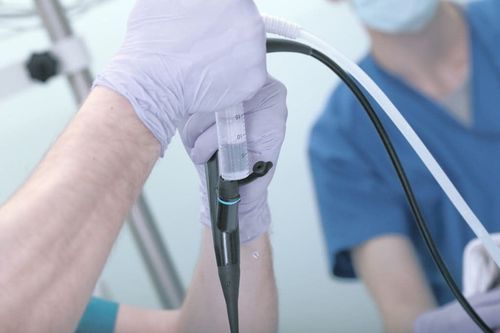This is an automatically translated article.
The article is expertly consulted by Master, Doctor Le Phuc Lien - Urologist - Department of General Surgery - Vinmec Central Park International General Hospital. The doctor has more than 12 years of experience in the field of urology and specialized urology.Cystoscopy is a method widely used by doctors to treat diseases of the urinary tract. Anesthesia Cystoscopy is recommended to help minimize pain during this procedure.
1. What is a cystoscopy?
Currently, to survey the condition of the lower urinary tract including the urethra and bladder, the doctor will perform a diagnostic cystoscopy technique with anesthesia through the endoscope. To perform this technique, the doctor will use an endoscope to examine the lining of the bladder and urethra, which will be slowly inserted into the urethra and bladder.In cases where the patient has clinical manifestations such as bloody or purulent urine, the patient has bladder syndrome, chronic cystitis, bladder tumor, stone or foreign body in the bladder, the doctor will advise decided to perform cystoscopy to examine and evaluate the patient's bladder condition.
Contraindications to the use of cystoscopy include trauma to the urethra, progressive infection of the lower urinary tract, benign prostatic hypertrophy, bladder tuberculosis, regional tumors Urinary tract with compression of urinary tract obstruction.
To perform a cystoscopy, the doctor may use one or both types of cystoscopes, the flexible cystoscope and the rigid cystoscope. Depending on the patient's case, the doctor will use the appropriate type of bronchoscope. Each type of bronchoscope has different advantages and disadvantages as follows:

Hình ảnh sỏi bàng quang
2. What diseases can cystoscopy diagnose?
Cystoscopy helps diagnose the actual condition of the bladder, helping the doctor come up with a treatment plan for the patient's condition.Check the cause of abnormal symptoms in the bladder Diagnose the condition of the bladder, possible urinary diseases. Diagnosing prostate problems Removing stones, foreign bodies in the bladder Removal of polyps or tumors in the bladder Catheterization Treatment of inflammation, benign enlargement of the prostate gland.
3. Cystoscopy procedure

Nội soi bàng quang bằng ống mềm
Patients need to take a urine sample before cystoscopy and inform the doctor if they are taking certain medications.
Anesthesia cystoscopy is a procedure performed that will help the patient minimize pain during the procedure, the patient is instructed to lie on his back on a flat bed in the obstetric position before performing anesthesia.
After the patient is anesthetized, the doctor begins the procedure by gently pushing the scope into the urethra towards the bladder, sterile water will be introduced inside to slowly fill the bladder to aim. The goal is to make it easier for the doctor to see the lining of the bladder.
Cystoscopy takes 5-10 minutes for examination purposes, longer for other procedures. The doctor will then gently pull the bronchoscope out and end the endoscopy session.
After the end of cystoscopy, the patient can go home the same day after the anesthetic has worn off.
4. Possible risks during Cystoscopy
Cystoscopy is a simple procedure, rarely the patient encounters unnecessary risks. However, patients should also be aware of possible complications during cystoscopy, which are:Infection: During cystoscopy, it is possible that bacteria will be introduced into the urinary tract causing infection. infection, however this is extremely rare. In this case, the doctor will prescribe antibiotics to the patient to prevent infection. Bleeding: During the colonoscopy, there may be some blood mixed in the urine, but the bleeding cases are not too serious, so the patient does not have to worry Pain: Any patient undergoing cystoscopy Everyone feels pain in the abdomen and a burning sensation when urinating, but these symptoms will disappear after a short time. Some of the complications associated with cystoscopy anesthesia, such as hypotension, respiratory distress, nausea, or vomiting, will be corrected by intravenous fluids or oxygen.
Vinmec International General Hospital is one of the hospitals that not only ensures professional quality with a team of leading medical doctors, modern equipment and technology, but also stands out for its examination and consultation services. comprehensive and professional medical consultation and treatment; civilized, polite, safe and sterile medical examination and treatment space.
Please dial HOTLINE for more information or register for an appointment HERE. Download MyVinmec app to make appointments faster and to manage your bookings easily.













